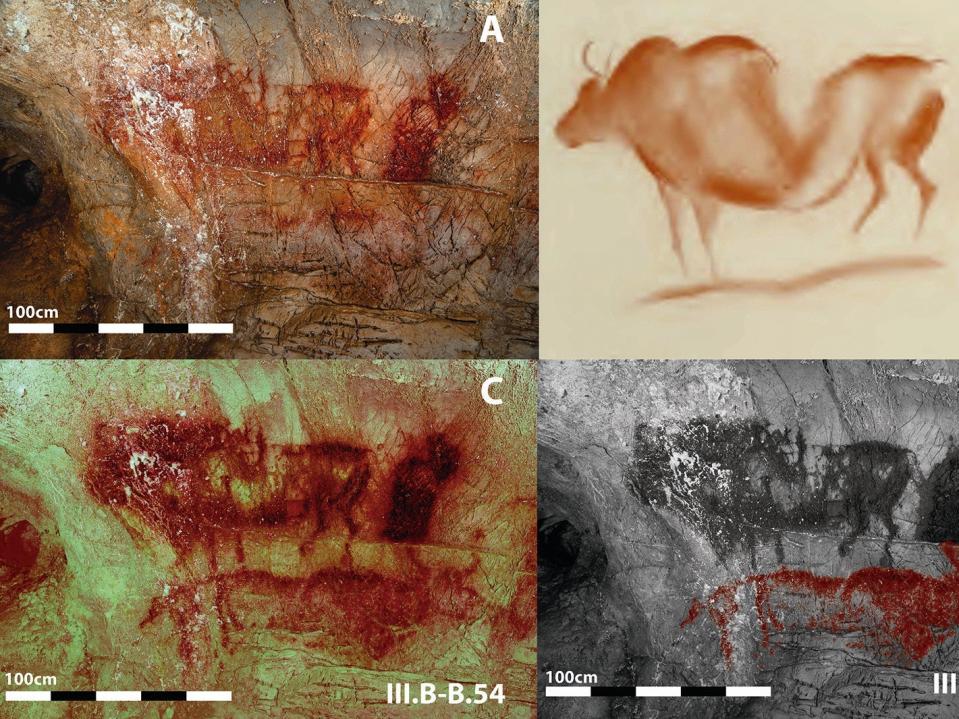Scientists uncover hidden ancient drawings of animals in a Paleolithic cave using a technique to make them look 3D
Archaeologists found three new drawings from tens of thousands of years ago in a Spanish cave.
They used a visual technique called stereoscopic photography to see the cave art like never before.
The technique made the art look 3D, which helped the archeologists make their new discovery.
Archaeologists have discovered new Paleolithic animal paintings from tens of thousands of years ago hidden in a cave using an updated photography technique.
There are over 700 paintings lining the rock walls of the Cave of La Pasiega in north-central Spain, which anthropologists first discovered in 1911.
For the most part, scientists viewed them as two-dimensional drawings. But the ancient artists actually incorporated bumps, dips, and crevices from the rocks into their art that can't be fully appreciated in 2D.
That's why a team of researchers recently used a technique called stereoscopic photography to observe the cave art in a unique new way. They published their results in the journal Antiquity in August.
Stereoscopic photography is a technique that uses two separate images to give the illusion of 3D.
"The artists played with the lights and shadows produced by the volumes of the cave walls," archaeologist Raquel Asiain, lead author on the paper, told Insider via email.
A crack in the wall might define the horse's chest, for example. Tracings or sketches might miss nuances in the rocks that 3D images can bring to life.
An old technique reveals new details
Dating back to the 1800s, stereoscopic photography itself is not new. Perhaps its most recognizable use is in View-Masters — the children's toy that presents separate images to the left and right eyes, creating a 3D illusion.
Asiain and her co-authors used a similar technique, taking two images 2.5 inches apart to mimic the average distance between the pupils of human eyes.
Using software, including Photoshop and DStretch, they processed the images for 3D glasses or virtual reality devices.
Once the scientists were able to see the drawings in 3D, they saw three new figures among the cave's walls that had never been seen before.
The figures included two horses and an extinct cattle species called an aurochs.
"Those figures were always there, but possibly the way of studying them kept them hidden," Asiain said.

"The most exciting thing we have discovered is that the way artists used the natural shapes of rocks changed over time," Asiain said.
The newest drawings incorporated more of the rock features, only needing a few added painted lines to capture the outlines of the animals.
The art can help viewers connect with the people who made it and make them realize how similar they were, Asiain said.
"We do not know the messages they wanted to transmit or their purpose," she said, but she believes they sought beauty in these drawings.
Read the original article on Business Insider

 Yahoo News
Yahoo News 
